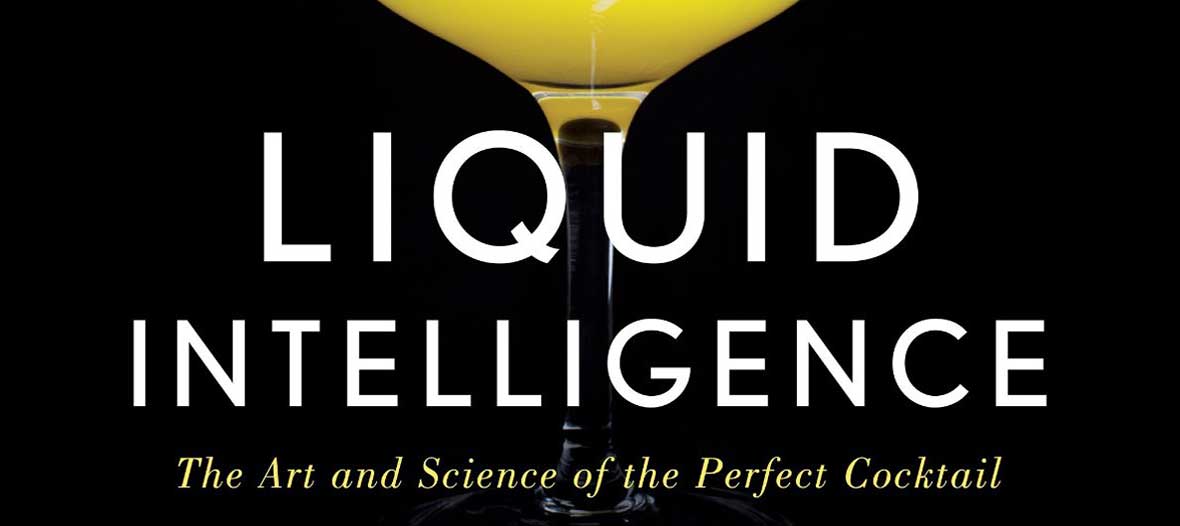Liquid Intelligence by David Arnold
The New Year has dawned. The hangovers have passed (hopefully). Now you are wondering what was in your cousin’s mystery punch and plotting ways to get him banned from every liquor store and wine shop in a 100-mile radius. Armed with a New Year’s resolution to not to be a victim to anyone alcohol-infused whims again, you seek knowledge and understanding. Ever the student, you know that there is more to mixology than just pouring libations into a cup and praying for the best. Lucky for you, you have a friend in Dave Arnold.
“Shaken, not stirred” takes on new meaning after reading Dave Arnold’s Liquid Intelligence: The Art and Science of the Perfect Cocktail. (W.W. Norton, November 2014). The art of mixing drinks has a solid and oft forgotten scientific foundation. Arnold gives the reader mad, but sound scientist within the realm of cocktail artistry. The biology major in me appreciates the theory and its presentation. Liquid Intelligence reads like the text book every math and science major wishes they had. To be honest, if my undergraduate chemistry and physics courses were based off this book, I would not have had to work so hard for those As.
Liquid Intelligence simultaneously blinds you with science while demystifying the reasons that the drinks you make at home do not come out right. With the level of detail that would put an Organic Chemistry lab report to shame, Arnold breaks down each component so clearly that even the Liberal Arts majors among us will understand. (No shade. Some of my best friends chose to major in the Liberal Arts.)
Seriously, there is an entire chapter devoted to ice. If you think it is unimportant, you will learn or you will drink subpar and unattractive drinks. The section on acid in drinks and how to make your own brought me back to my days in the lab as an undergrad. If that doesn’t get your nerd juices flowing, maybe this will. Arnold devotes a good portion of Liquid Intelligence to new techniques and ideas. This is where cocktail physicists boldly go where few have gone–chilling with cryogens (liquid nitrogen and dry ice) and using red hot pokers and hot rocks to heat drinks. I feel I may have lost the Liberal Arts majors again.
Not to worry, if temperature play isn’t your thing, try the juice shake where ice cubes are made of the juice for your blended cocktail. Take my word for it, it is more exciting than it appears. In fact, it’s a threshold technique.
Since Dave Arnold began his journey with the gin and tonic, it seems fitting that we feature that recipe. Technophobes breathe easy; this is a no-tech gin and tonic. There is a more complex gin and tonic recipe in the book, but I think I’ve reached my nerd quotient for one article.
The Best Gin & Tonic You Can Muster if You Can’t Muster Much
- 1 ¾ ounces (52.5 mL) gin from the freezer
- 3 ¼ ounces (97.5 mL) ice-cold fresh* tonic water
- Squeeze of lime
- Ice from freezer
- Glass from freezer
1. Pre-freeze your glass and gin and pour the gin into the glass.
2. Tilt the glass and pour in fresh, ice-cold tonic water.
3. Now squeeze in some fresh lime.
4. Gently place in un-tempered freezer ice.
5. Place the lime on top and drink it, lazy head.
*Fresh means not only unopened, but recently purchased. Plastic bottles lose carbonation rather quickly, but if you buy your tonic water in glass bottles or cans, storage time isn’t an issue because they are glass-impermeable.
Buy this Book!
Amazon





